Confused by how much weight you can actually carry on top of your vehicle? Don’t worry, so are most of us, but this helpful guide should help you calculate this.
When trying to calculate how much weight you can carry on top of your vehicle there are few key factors to take into consideration:
- Load ratings
- Static vs dynamic forces
- On road vs offroad usage
Please note: This information has been gathered from various sources and should be reviewed for specific installations.
A good source of information is the manufacturer of the equipement, for example Yakima provided much of the below information for roof racks, we will be adding further manufacturers detail over time. If in doubt please contact us.
Applicable to all Yakima LockNLoad Crossbar and Platform load carrying systems.
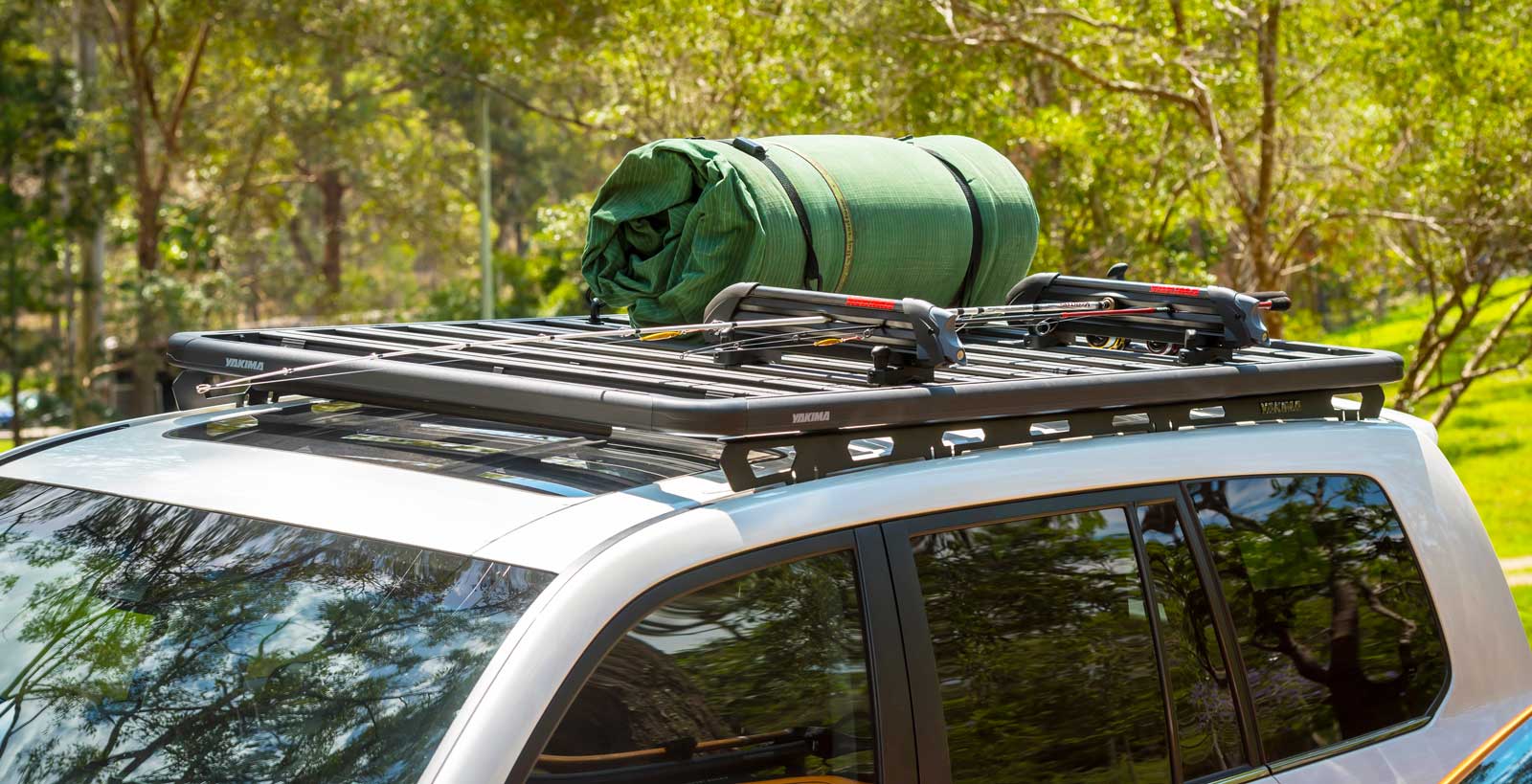
CALCULATING LOAD RATINGS
To calculate the load rating of your vehicle’s roof, you first need to understand that this needs to be derived from the ratings of various components.
A typical Yakima LockNLoad roof carrying scenario consists of:
- A vehicle roof (obvious, right?)
- A crossbar solution, typically consisting of crossbars, legs and a vehicle specific kit.
Or, - A platform solution, typically consisting of a platform, then either legs and vehicle specific kit or RuggedLine mounting system.
- Possibly a further carrying accessory like a roof box, kayak holder, etc.
Each of the items listed above has an independent maximum load rating. The maximum amount you can carry on top of your vehicle is the lowest maximum value of any of these elements.
For example, if your vehicle roof has a manufacturer’s maximum load rating of 80 kg, your mounting solution and crossbar or platform is rated to 100 kg, and your roof box says it can carry 90 kg, the maximum you can carry is 80 kg. Just think of this as the weakest link in the chain concept.
Roof rack rated to carry
100 kg

Product rated to carry
90 kg

Roof rated to carry 80 kg
The lowest rating is the
maximum you can carry
If the lowest number identified relates to the vehicle roof, remember that the load rating includes the crossbar or platform system weight. So, if your crossbar solution weighs 10 kg, the maximum you can carry on the crossbars is 70 kg (80 kg – 10 kg = 70 kg)
To find the load ratings of the various components you’ll need to consult the manufacturer’s instructions (owner’s manual for the vehicle roof rating) and/or website. Yakima LockNLoad product load ratings can be easily found on your local Yakima website in the LockNLoad section and your vehicle's specific info on our fit finder. If in any doubt, call rather than guess.
Always remember that load ratings for systems assume that any load is evenly spread over the system. Where possible, apply this when loading your vehicle. Excessive loading on a point can cause damage and vehicle instability.

STATIC VS DYNAMIC LOADS
What’s the difference? Put simply, dynamic is when you are driving your vehicle and there is motion, and static is when your vehicle is stationary.
The load ratings applied to products by roof rack manufacturers are for when you are driving the vehicle, i.e., they are dynamic load ratings. Static load ratings are generally higher.
Why does this matter? Well, generally it doesn’t, as you don’t add more luggage when you reach your destination and stop driving.
Where it does come into play, for example, is with roof top tents (RTTs). In the example above, we determined that you can carry 70 kg on your crossbars. If your RTT weighs 50 kg, you are within your limits by 20 kg (70 kg – 50 kg = 20 kg).
So, what happens when you climb into your RTT? If you weigh 80 kg, using the dynamic load rating, you would naturally be well over the limit. Don’t worry though – unless you plan on being in your tent while driving (which is not recommended)! This is when the static load rating applies.
As a general rule, in a static environment, the load rating can be increased by a multiple of three (3). So, in this case, you can load 230 kg: 80 kg x 3 = 240 kg – 10 kg (roof racks) = 230 kg (remember, this needs to be evenly distributed) onto your roof and you will be ok and actually have 100 kg to spare.
(230 kg – 50 kg rooftop tent – 80 kg person = 100 kg)
Note that the 3x multiple applies to roof rack components. As a general rule, it should be applicable to most vehicle roofs but we always recommend you consult with your vehicle manufacturer before assuming any increase from dynamic to static load rating in the vehicle roof.
Static loading is the rating applied when the vehicle is stationary.
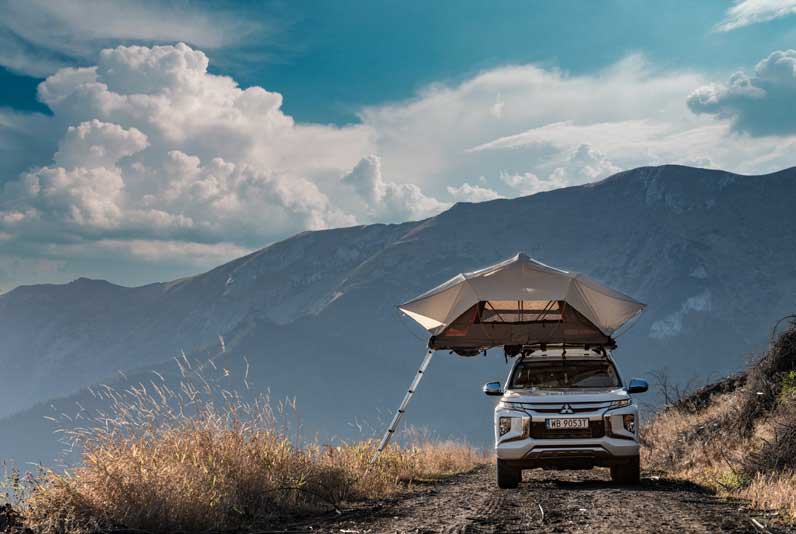
OFFROAD USE
All load ratings are applicable for driving on well-formed sealed roads with a smooth surface.
Once you move to forest service roads, access roads or other non-technical terrains* at moderate speeds, your stated load ratings have to be reduced. This is because the extra bumpiness of these environments gets transmitted through the vehicle and anything attached to it – potentially generating additional forces on your roof rack system.
For Yakima LockNLoad offroad rating reductions across specific roof rack systems, refer to the table below:
| FITMENT TYPE | DIAGRAM | OFFROAD REDUCTION |
|---|---|---|
|
Fixed Point System bolts into existing points on vehicle roof |
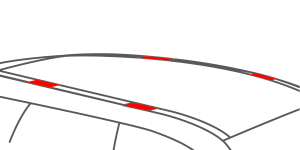 |
0% |
|
Track Mount and other Permanent Mounts System is attached to the roof via a permanently mounted track |
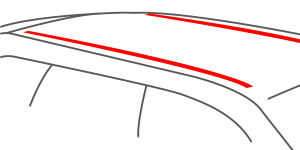 |
20% |
|
Raised Rail Mounts System attaches to existing factory raised rails |
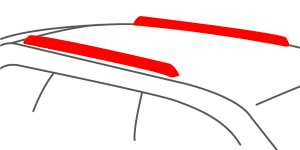 |
20% |
|
Flush Rail Mounts System attaches to existing factory mounted flush rails |
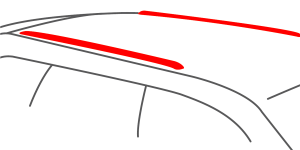 |
33% |
|
Gutter Mounts System attaches to existing OR added gutters on vehicle |
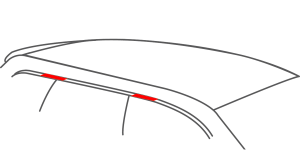 |
33% |
So, in the example previously mentioned where we determined the roof capacity at 80 kg was the weakest link, if the crossbars are attached via a track mount system the 80 kg will reduce by 20% to 64 kg (remember to then still deduct the crossbar or platform system weight to determine how much you can carry i.e 64 kg – 10 kg = 54 kg).
* Note: extreme four wheel driving such as rock crawling are not covered by Yakima's warranty regardless of fit type.
ALTERNATIVE MOUNTING OPTIONS
Not attaching the roof racks to your vehicles roof? Don’t worry, in general, the same rules apply.
If you’re attaching your roof rack solution to any of the following:
- Ute tub
- Ute tray
- Ute hard lid
- Canopy
The same guidelines apply for calculating the maximum load you can carry and offroad weight reductions of Yakima’s roof rack systems. However, you need to speak to the manufacturer of the vehicle, tray, hard lid or canopy to understand whether they have their own offroad rating reductions and dynamic to static load increases, as this is likely to vary by brand and manufacturer. Then, always remember to apply the lowest rating.
KEY TAKEAWAYS
- Load rating is the lowest maximum rating of the various components (generally vehicle roof, kit and crossbar or platform).
- Static loads can increase by up to a multiple of three (subject to confirmation by your vehicle manufacturer).
- Once you go off a sealed road, your load rating may reduce as per the "Fitment Type" table above.